Indian Spices are aromatic and flavorful plant substances that have been used for centuries to enhance the taste and aroma of food. Derived from various parts of plants such as seeds, fruits, roots, bark, and flower buds, spices play a crucial role in culinary traditions around the world. Additionally, they not only add complexity and depth to dishes but also offer numerous health benefits, including antioxidant, anti-inflammatory, and digestive properties
Historically, spices were highly valued and drove global trade and exploration, influencing cultural exchanges and economic development. Furthermore, today, they remain integral to both everyday cooking and gourmet cuisine, transforming simple ingredients into rich, flavorful meals. Whether used in savory dishes, sweet desserts, or aromatic beverages, spices are indispensable in creating diverse and delicious flavors, making them a cornerstone of global gastronomy. Here is the list of Indian spices and its health benefits.
List of Indian Spices
| SL. No |
Name of Indian Spices |
Common Name |
Rich in |
Health Benefits |
Picture |
| 1 |
Cumin |
Jeera | Iron and calcium | Anti-inflammatory and antioxidant properties May improve brain function and lower risk of brain diseases. Can help in fighting certain cancers Improves skin health and treats wounds |
|
| 2 |
Turmeric |
Haldi | Iron and potassium | Aids digestion and boosts metabolism. Additionally Rich in iron, supports immune function. Has antimicrobial and antifungal properties. Can help in managing diabetes by lowering blood sugar levels |
|
| 3 |
Coriander |
Dhaniya | Iron and calcium | Improves digestion and prevents flatulence. Has anti-inflammatory properties Lowers blood sugar levels. Rich in antioxidants, supports overall health |
|
| 4 |
Cardamom |
Elaichi | Iron Potassium | Aids digestion and reduces bloating. Acts as a breath freshener. Helps in treating respiratory issues. Contains antioxidants that protect cells from damage
|
|
| 5 |
Mustard |
Sarson | Sodium Magnesium and selenium | Improves digestion and stimulates appetite. Anti-inflammatory and antibacterial properties. Rich in selenium, supports thyroid function. May help in reducing severity of asthma and rheumatoid arthritis |
|
| 6 |
Asafoetida |
Hing | Aids in digestion and prevents flatulence. Antimicrobial properties Reduces symptoms of respiratory disorders. May help in lowering blood pressure |
|
|
| 7 |
Cloves |
Laung | Magnesium | Antimicrobial properties, fights infections. Provides relief from toothache and sore throat Improves digestion and reduces nausea. Rich in antioxidants, supports liver health |
|
| 8 |
Cinnamon |
Dalchini | Carbs and Calcium | Regulates blood sugar levels. Reduces risk factors for heart disease. Anti-inflammatory and antioxidant properties. May help in fighting bacterial and fungal infections |
|
| 9 |
Black Pepper |
Kali Mirch | Iron, Calcium copper, potassium | Enhances nutrient absorption. Improves digestion and prevents constipation. Anti-inflammatory properties May improve brain function and reduce appetite |
|
| 10 |
Fenugreek |
Methi | Iron and Fiber | Regulates blood sugar levels. Improves digestion and reduces constipation. Increases milk production in breastfeeding women. May help in reducing cholesterol levels |
|
| 11 |
Saffron |
Kesar | Iron Potassium | Rich in antioxidants, supports cellular health. Improves mood and treats depression. Enhances memory and learning ability. Has anti-cancer properties |
|
| 12 |
Ginger |
Adarak | Iron and potassium | Reduces nausea and vomiting. Anti-inflammatory properties, relieves pain. Improves digestion and fights infections May help in reducing menstrual pain
|
|
| 13 |
Fennel |
Saunf | Iron and calcim fiber potassium and vitamin C | Improves digestion and reduces bloating. Acts as a natural breath freshener. Rich in antioxidants, supports overall health. May help in regulating blood pressure
|
|
| 14 |
Nigella Seeds(Black Cumin) |
Kalonji | Protein, carbohydrate, dietary fiber | Antioxidant properties. Helps in reducing blood pressure. Supports heart health. Has anti-inflammatory properties |
|
| 15 |
Bay Leaves |
Tej Patta | Iron Magnesium Vitamin c | Aids in digestion Anti-inflammatory and antimicrobial properties Supports respiratory health. May help in managing diabetes
|
|
| 16 |
Nutmeg |
Jaiphal | Iron, Fiber, Vitamin A Vitamin C Manganese Vitamin E | Improves digestion and relieves constipation. Has anti-inflammatory properties. Promotes sleep and relieves insomnia. May help in improving brain health |
|
| 17 |
Mace |
Javitri | Potassium, Iron, Vitamin A, Vitamin C, Fiber | Enhances digestion and reduces nausea. Rich in antioxidants. Supports oral health. May help in relieving stress and anxiety |
|
| 18 |
Curry Leaves |
Kadi Patta | Fiber, Calcium, Protein, Essential oils | Rich in antioxidants. Improves digestion and prevents diarrhea. Supports liver health. May help in managing diabetes |
|
| 19 |
Carom Seeds |
Ajwain | Vitamin and minerals, Potassium, calcium | Improves digestion and relieves indigestion. Antimicrobial properties. Relieves cold and cough symptoms. May help in reducing blood pressure
|
|
| 20 |
Poppy Seeds |
Khus Khus | Omega-3, Omega-6, Fiber, Protein | Improves digestion. Rich in calcium, supports bone health. May help in relieving pain and inflammation. Promotes sleep and reduces anxiety |
|
Why to incorporate Indian spices in our cooking
Using spices in cooking offers a myriad of benefits that extend far beyond their ability to enhance flavor. It bring complexity and depth to dishes, transforming simple ingredients into extraordinary meals with their vibrant aromas and tastes. They have preservative qualities, helping to extend the shelf life of food.
In ancient period, spices played a crucial role in trade and cultural exchanges, shaping cuisines and traditions around the world. By incorporating them into your cooking, you not only elevate the sensory experience of your meals but also contribute to better health and embrace a rich cultural heritage.
How to Use Indian Spices in Cooking
Cooking with spices can transform a simple dish into a flavorful masterpiece. Here’s a comprehensive guide to help you understand, select, and use spices effectively in your culinary endeavors. They are aromatic seasonings derived from the bark, buds, fruit, roots, seeds, or stems of various plants. They are used to enhance the flavor, color and aroma of food.
Selecting Indian Spices
- Freshness: Always choose fresh one. Check the manufacturing date and try to buy from stores with high turnover to ensure freshness.
- Whole vs. Ground: Whole spices generally retain their flavor longer than ground ones. Buy whole spices and grind them as needed for maximum freshness.
- Quality: Invest in high-quality spices, as they will have a more intense flavor and aroma.
Using Spices in Cooking
- Know Your Spices: Familiarize yourself with the flavor profile of each one. For example:
- Cumin: Earthy and warm, commonly used in Mexican, Middle Eastern, and Indian cuisines.
- Coriander: Citrusy and slightly sweet, often paired with cumin in many dishes.
- Turmeric: Earthy and slightly bitter, used for color and flavor in Indian and Southeast Asian dishes.
2.Balancing Flavors: Use spices to balance the flavors in your dish. For instance, if a dish is too sweet, adding a bit of them like black pepper can counteract the sweetness.
3.Building Flavors:
- Tempering: In Indian cooking, whole spices are often tempered in hot oil or ghee at the beginning of cooking to release their essential oils and enhance the dish’s flavor.
- Dry Roasting: Some spices, like cumin and coriander seeds, can be dry roasted before grinding to intensify their flavor.
- Layering Spices: Add spices at different stages of cooking to build layers of flavor. Start with whole spices, followed by ground spices, and finish with fresh herbs or a final sprinkle of a specific spice for a burst of flavor.
- Using Spice Blends: Pre-made spice blends like garam masala, curry powder, and Chinese five-spice can simplify the cooking process and ensure a balanced flavor profile. Make your own blends to customize flavors to your taste.
4.Experimenting : Don’t be afraid to experiment. Start with small amounts and taste as you go. Keep notes of combinations you like and adjust quantities to suit your palate.
5.Spice Pairing: Learn which spices pair well together. For example:
- Cinnamon and Cloves: Often used together in sweet and savory dishes.
- Cumin and Coriander: A classic combination in many cuisines.
Common Spice Combinations in World Cuisines
- Indian Cuisine: Garam masala, turmeric, cumin, coriander, cardamom, and cloves.
- Middle Eastern Cuisine: Cumin, coriander, sumac, za’atar, and cinnamon.
- Mexican Cuisine: Cumin, chili powder, oregano, and coriander.
- Chinese Cuisine: Star anise, Sichuan peppercorns, cinnamon, cloves, and fennel (components of Chinese five-spice powder).
Safety Tips
- Spice Allergies: Be aware of potential allergies and use spices accordingly. Always taste test with a small amount if trying a new spice.
- Handling Spices: Some spices, like chili powders, can irritate the skin and eyes. Handle them carefully and wash your hands thoroughly after use.
How to store spices
Proper storage of Indian spices is crucial for preserving their vibrant flavors and potent aromas, which are essential for authentic Indian cooking. By following these guidelines on storage conditions, container selection, and regular maintenance, you can ensure that your spices remain fresh and flavorful for longer periods. With well-stored spices, every dish you prepare will be infused with the rich, aromatic essence that defines Indian cuisine.
1. Understanding Spice Varieties
Before delving into storage techniques, it’s important to understand the two main categories :
- Whole Spices: These include items like cinnamon sticks, cloves, cardamom pods, and cumin seeds. Whole spices generally retain their flavor longer than ground spices.
- Ground Spices: These are finely powdered forms of spices like turmeric, coriander, and chili powder. Ground spices tend to lose their potency faster than whole spices.
2. Optimal Storage Conditions
To preserve the quality of Indian spices, the following storage conditions are crucial:
- Cool Temperature: Spices should be stored in a cool environment, away from heat sources like stoves or ovens. Heat can degrade the essential oils in spices, diminishing their flavor.
- Dry Environment: Moisture is the enemy of spices, as it can cause mold growth and clumping. Keep spices in a dry place and ensure containers are sealed tightly after each use.
- Darkness: Exposure to light can cause spices to lose their color and flavor over time. Store spices in opaque or dark-colored containers to block out light.
3. Types of Storage Containers
Choosing the right containers is key to maintaining spice freshness:
- Airtight Containers: Use airtight glass jars or stainless-steel containers to prevent air and moisture from entering. Plastic containers can also work, but ensure they are of food-grade quality and do not retain odors.
- Opaque Containers: Opaque containers protect spices from light exposure. If using transparent containers, store them in a dark cabinet.
- Small Batches: Store spices in smaller containers if possible. This minimizes the exposure to air each time the container is opened, preserving the spice’s potency.
3. Labeling and Organization
Proper labelling and organization can enhance the ease of use and longevity of your spices:
- Labels: Clearly label each container with the spice name and purchase date. This helps in keeping track of freshness and usage.
- Alphabetical Order: Arrange spices alphabetically or by category (e.g., whole spices, ground spices) for easy access and inventory management.
4. Special Storage Tips for Specific Spices
Some Indian spices require special attention:
- Turmeric: Store in a tightly sealed container as it can stain surfaces and has a strong aroma.
- Asafoetida (Hing): Due to its strong odor, store asafoetida in an airtight container, and ideally, in a separate cabinet.
- Saffron: Keep saffron in a cool, dark place, ideally in its original airtight container or a small glass jar.
5. Refrigeration and Freezing
Certain spices can benefit from refrigeration or freezing:
- Nuts and Seeds: Spices that contain oils, such as sesame seeds and nutmeg, can go rancid. Store them in the refrigerator or freezer to extend their shelf life.
- Ground Spices: If you buy spices in bulk, consider storing a small amount in your pantry for immediate use and the rest in the freezer. Ground spices like chili powder and coriander can be stored this way to retain freshness.
6. Regular Checks and Rotation
To ensure spices remain fresh:
- Check Regularly: Periodically check spices for signs of mold, pests, or changes in aroma and color. Discard any spices that show signs of spoilage.
- Rotation: Use older spices first to ensure they are consumed before losing their potency. This practice, known as FIFO (First In, First Out), helps maintain a fresh supply.
7. Purchasing Tips
To maintain the highest quality of spices:
- Small Quantities: Purchase spices in small quantities to ensure they are used while still fresh.
- Whole Spices: Whenever possible, buy whole spices and grind them as needed. This preserves the flavor and extends shelf life.
- Reputable Sources: Buy spices from reputable sources that ensure quality and freshness.
Economic Impact
Spices have shaped India’s economy for millennia. During the height of the spice trade (15th-18th centuries), India was the world’s main supplier. Cities like Calicut and Goa became wealthy ports, while inland spice routes fostered cultural exchange.
Today, India remains a spice superpower:
- It produces over 75 types of spices.
- It’s the world’s largest producer, consumer, and exporter of spices.
- The spice industry employs over 3 million people.
- Major exports include chili, turmeric, cumin, and coriander.
The value of this trade goes beyond numbers. In regions like Kerala, known as the “Spice Garden of India,” spice cultivation is deeply tied to local identity and livelihoods
Summary
Indian spices are an integral part of the country’s culinary traditions. Besides each spice not only adds unique flavors and aromas to dishes but also provides significant health benefits. Furthermore aiding in digestion to offering anti-inflammatory and antioxidant properties, these spices contribute to both the taste and the nutritional value of the food. Incorporating a variety of these spices into your diet can enhance your meals and support your overall health.

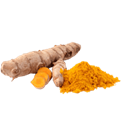
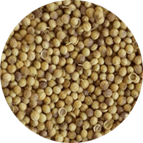
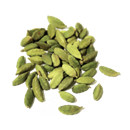
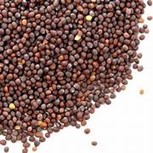
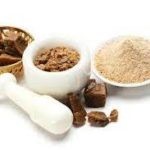
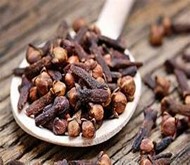
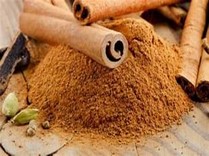
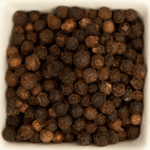

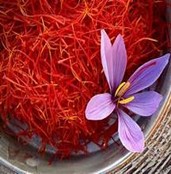

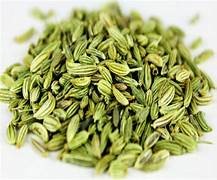

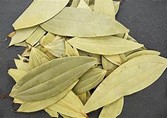
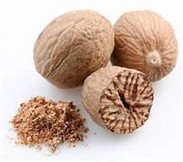


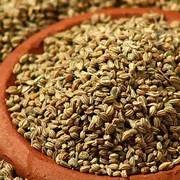
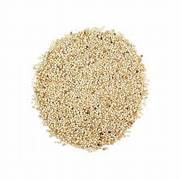
Thanku for ur wonderful information and importance about spices
Thank you so much